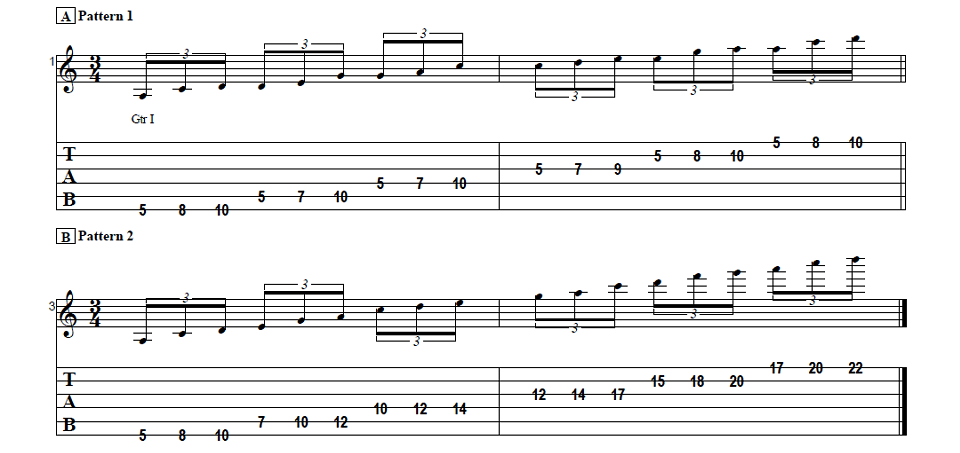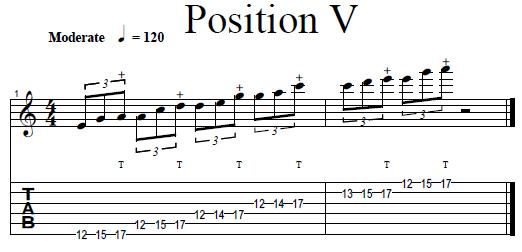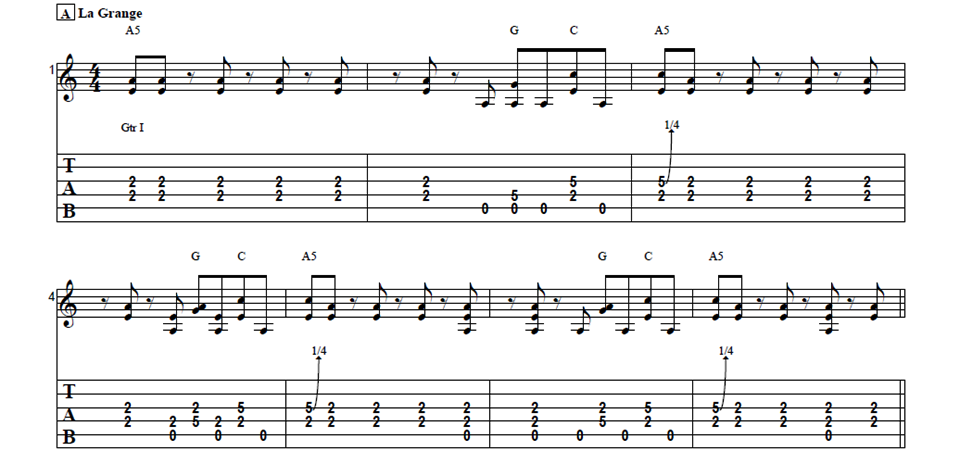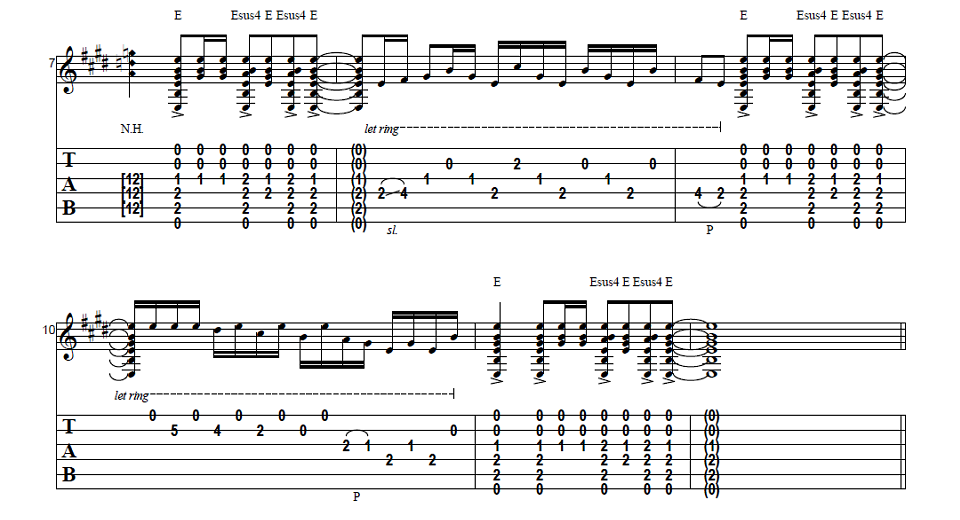Learn to play three note per string pentatonic scale patterns with Guitar Control instructor Darrin Goodman, aka Uncle D. Be sure to get the free tabs to go along with the video instruction and you will be rockin’ these three note per string pentatonic scales tonight!


Introduction
How’s it going everybody? This is Darrin with GuitarControl.com bringing you this video lesson and today I want to show you how to play two patterns for a three per string pentatonic scale.
So right now, Guitar Control is giving away this really awesome daily practice routine to improve your lead guitar chops. This was put together by our very own Silvio Gazquez, a two-time Guitar Idle finalist. This routine covers the four main concepts that are necessary for lead guitar; alternate picking, legato, sweep picking and tapping. All the tabs and exercises are all included in this free ebook and there’s a link in the description where you can get yours.
So be sure to click on the link in the description for the tabs and let’s get close up and take a look at this.
3 Note Per String Pentatonic Scale -1
All right, so there are two patterns that I want to show you. The first, and I’m sure there are many other ones besides this, three note per string pentatonic isn’t really my thing. I don’t use this a whole lot and I’ll kind of explain why as we go along. But the first pattern basically what it did was we have to add this note onto the low E string, so it’s a whole step away. So basically what it is I just took this pattern one, this pentatonic box pattern that I’m sure you already know and I just added a third note onto each string, so with doing that we end up getting repeated notes, or doubled up notes rather. So here I’m doing it in the key of A so I’m starting on the fifth fret so I’m going five and then eight with my third finger and then with my pinky… Now when I go to the first note on the A string which is at the fifth fret, it’s the same note as they’re both D… So as you ascend all the way through this you keep hearing a note doubled up. Now when I go to the A string it’s five and then seven and then ten. So here we got a step and a half and a whole step and here we’ve got a whole step and then a step and a half… Now we’re going to do the same thing on our D string and then we go to our G string we’re just back to two steps; so it’s five, seven, nine and then on the B string doubled up note again we’re here on the fifth fret, five, eight, ten and then five, eight, ten on the high E string as well… All right so that sounds a little bit weird when you’re just ascending and descending the scale because of those two notes they’re being doubled up and as you can see these stretches are pretty big and this is one of the main reason why I don’t really utilize this a lot in my own playing because it is really difficult unless I’m playing stuff that’s up higher like that little thing I played at the in the opening of this where the frets are a little closer together and it’s a little bit easier, but it’s still fairly difficult. I haven’t really been trying to it, it’s only been recently that I’ve really been “like okay, I’m gonna try to utilize this”. So if you want to play this where you’re not getting the notes doubled up then what we’re going to do is we’re going to have to shift up every time we change every time we go to the next string.
3 Note Per String Pentatonic Scale Pattern -2
So here we’re going to start off the same way; 5, 8, 10. Now the next actual note in the scale is here on the seventh fret of the A string… So now we actually have the same shape 9, 10 or excuse me 7, 10, 12. So we’re 5, 8, 10, 7, 10, 12. Now we’re gonna have to go to the 10th fret on the D string to the 12th fret and then the 14th fret, so it’s just two whole steps… Now when we go to the G string on the 12th fret and then the 14th fret and then the 17th fret and then when we go to the B string we’re going to have to jump all the way up to the 15th fret to the 18th fret and then the 20th fret; so we’re a step and a half and a whole step again and then when we go to the high E string we’re going to move up again to 17, 20 and then 22. So obviously these shapes are both movable you can move them at different keys, but as you can see this one takes up a pretty good chunk of the fretboard so I can I can already see the potential for there being all kinds of like cool licks that could be played in there that are like a fast ascending sequence or descending, but I haven’t quite got there yet with coming up with anything; so that could be a future video. So that whole sequence… So it would be really difficult to just fly through that and I’m sure it can be done. I guess we’re looking at my personal limitations on this right now. So I’ve got smaller hands and I kind of got shorter fingers and it just makes it really difficult to do the big stretches like that. That was why I really kind of initially abandoned the whole thing in the first place.
3 Note Per String Pentatonic Lick
So that little lick that I played at the beginning… Starting on the high E string we’re on the 10th fret or excuse me the 12th fret and 12th fret, 14th fret with your second finger, and the 17th fret with your fourth finger. So this is lick is actually an F sharp minor… So here is just a regular old pentatonic box pattern. So what you can do is you know that that note’s in there and you know that note’s in there and then the other note that is here on the B string normally is here on the 12th fret; so you can just keep that in mind that no matter where you’re at if we wanted to do something in E Minor, here, here and here… So that’s like the extent that I’ve done with using three note for string pentatonic’s is just like a fast thing on the maybe on the high E and the B string. So that thing I did at the beginning I put my first finger on the 12th fret, second finger on the 14th fret and fourth finger on the 17th fret. So the first note we’re going to pick is the 14, so we’re gonna pick and I do a hammer-on and a pull-off and then to uh the 14th fret on the B string to the 17th fret. Now at this point I’m gonna go back to this note, but I’m going to bring my first finger up because now I’m back in the position of the Box pattern… So if we come here… your first finger then I’m going to go to the B string and I’m on the 17th fret because like I said we’re inside that box pattern. So I’m going to do a pull-off from 17 to 14 and then move down to the G string and now it’ll be 16 to 14 and then finally ending there on F sharp on the 16th fret of the D string… Now we’re going to go to the 14th fret on the B string and do a hammer on to 17 and then back to the 14th of the high E string. All right, so after we go to that last note on the high E string and then we’re going to shift our hand position because we’re going to go back into that box pattern and also an F sharp… So actually I guess now that I played up to speed my hand changed. So we’re going to bring our first finger up to play this note and that’s what puts us into that pentatonic pattern… just descending the scale…
Conclusion
All right, so there you have it. Three note per string pentatonic patterns that can hopefully kind of get you introduced to the whole concept and then that lick there at the end to kind of get an example of how to use it. So if you like this lesson be sure to give me a thumbs up and leave a comment down below if you have any questions about this or other guitar related topics. If you haven’t already done so please subscribe to the channel and hit that notification bell so you don’t miss any of the content that we upload throughout the week. Well that is all I have for you today. Thanks for watching and have a great day.





